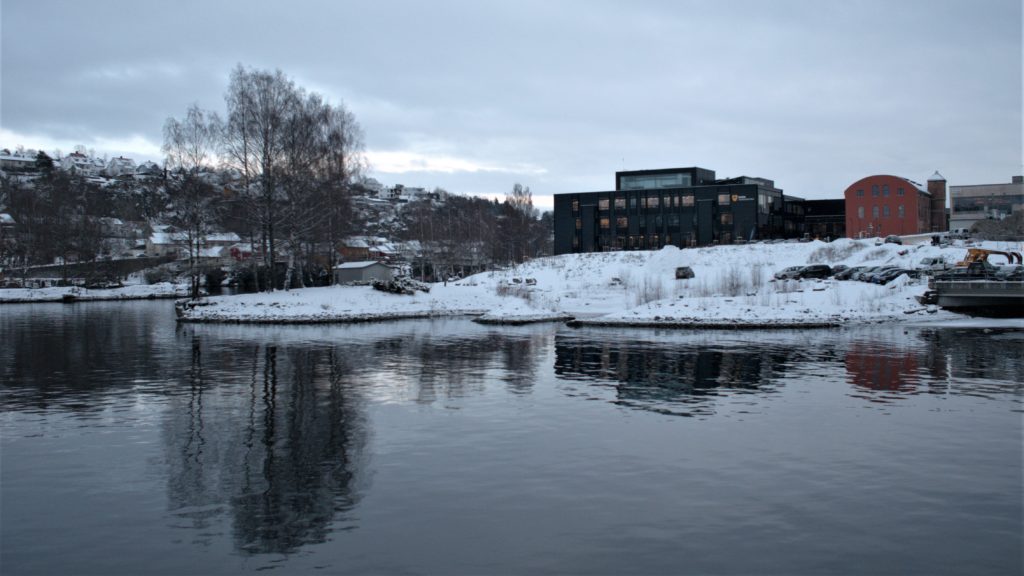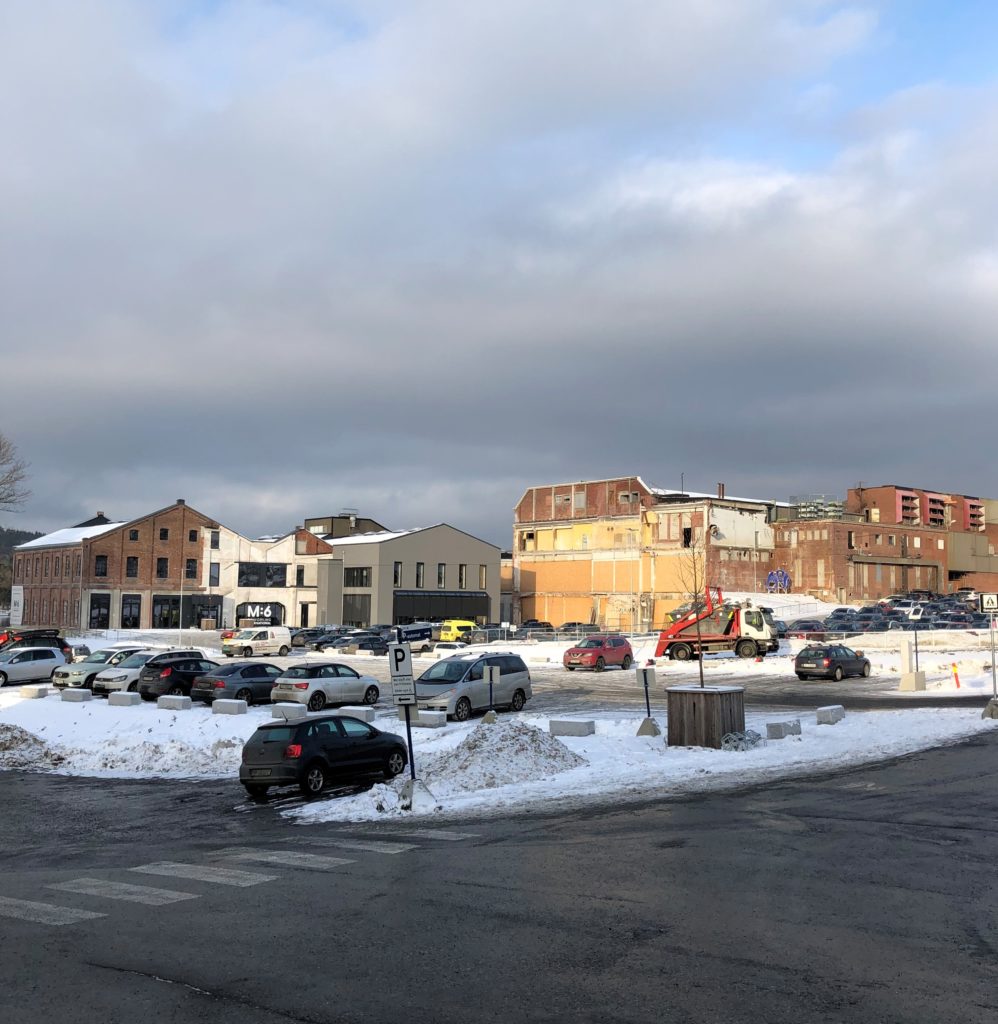Case Presentation
Klosterøya, Moss and Verket, Skien
The two sites were selected based on both currently undergoing urban regeneration as well as being centrally located in historic towns situated on the margins of the Oslo region. Moss is located 60 kilometres south-east of Oslo, 41 minutes by train, and the municipality has 33,000 inhabitants. Skien is located 130 km south-west of Oslo, two hours and 14 minutes by train, and has 54,000 inhabitants. The case site in both cities were former cellulose factories, thus making them areas that are now subject to major transformation from being industrial parts of the city to becoming new neighbourhoods with housing, workplaces and cultural activities. Additionally, both sites are centrally located near the city center, and are situated by water fronts/harbours, which makes them rather attractive for future development.

Case Klosterøya, Skien
Skien has traces back to a monastery from mid-12th century, and the first industrial companies from the 1850s were related to hydropower and wood processing. After most of the traditional industries ended, Skien has primarily been a commercial and administrative centre for the region.
Klosterøya[1] is situated on an island centrally located in Skien. The main industry owner at this site was Union AS, a company founded in 1873, and a few buildings on the site stem from this first phase. The planning processes for future transformation of the site started in 2005/2006, only a few months after the industry close-down in 2005. The intention is to develop the site as an active part of the main city, and the plan is for it to house a combination of commercial enterprises, cultural and educational institutions, and residential neighbourhoods. Including a large school is seen as a key to bring activity to the area. Emphasis is placed on the site’s closeness to water (lake, canal, river), enabling an active use of easily accessible recreational area. The link to its history as a monastery site is considered an asset. The development of the area is approved through the master plan for the city center, followed by more detailed zoning plans for smaller parts of the area. The transformation of the area has begun. A new residential area is already established with more under construction, and the high school has opened. There are several old industrial buildings that have been preserved and adapted for new purposes. ‘Spriten’, a 100-year old methanol factory, has become a place of symbol for Klosterøya through to its new purpose as an Art Centre, as well as it’s height which makes it stand out in the urban landscape.

Case Verket, Moss
Verket is situated right at the edge of the Moss city centre. The river, with its impressive waterfall, provides the natural southern border, while the fjord, with the former disembarkation harbour, defines the border in the west. Verket has been the location of several industries throughout the centuries. The oldest remains of industry stem from Moss’ iron works, which began its operations in 1704 until it closed in 1876. The main building, Konventionsgaarden, is listed, while the dwellings, situated in ‘Gata’, the street where the workers at Verket lived, are preserved. The former paper and cellulose factory (M. Peterson & Søn) started its production in 1883. The final close-down of all industrial activities took place in 2012. However, the land was sold to the property developer Höegh Eiendom (who still owns the area) already in 2006. When they took over in 2006 a lease was signed, which ensured continued industrial production for a few more years. The planning process started up immediately after the industrial activities ended. An area zoning plan was approved in 2015, determining the future use of the area. The plan is followed by more detailed zoning plans for smaller parts of the area. The transformation of the area is ongoing, with the first phase focusing on the area closest to the city centre. It is planned as a mixed-used area, with a series of commercial activities such as shops and services combined with high density residential area. Closeness to water (fiord, river) adds to the area’s attractiveness. The first residents have already moved in, and also some new and rebuilt office buildings are taken in use.

Photo: Cecilie Flyen.
[1] In English ‘Monestary island’
